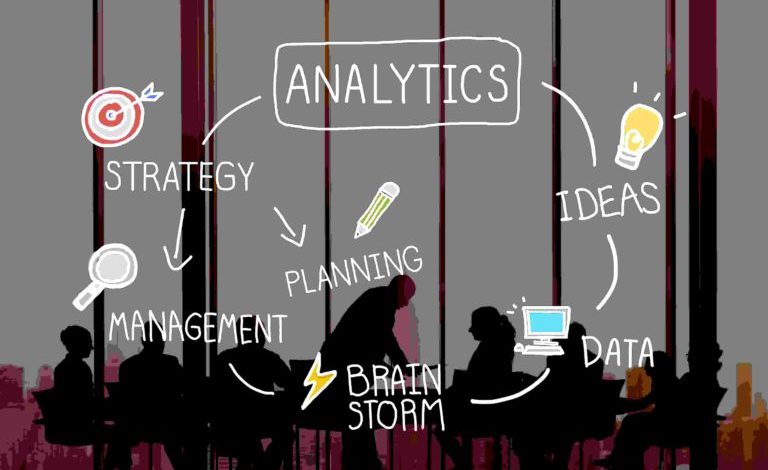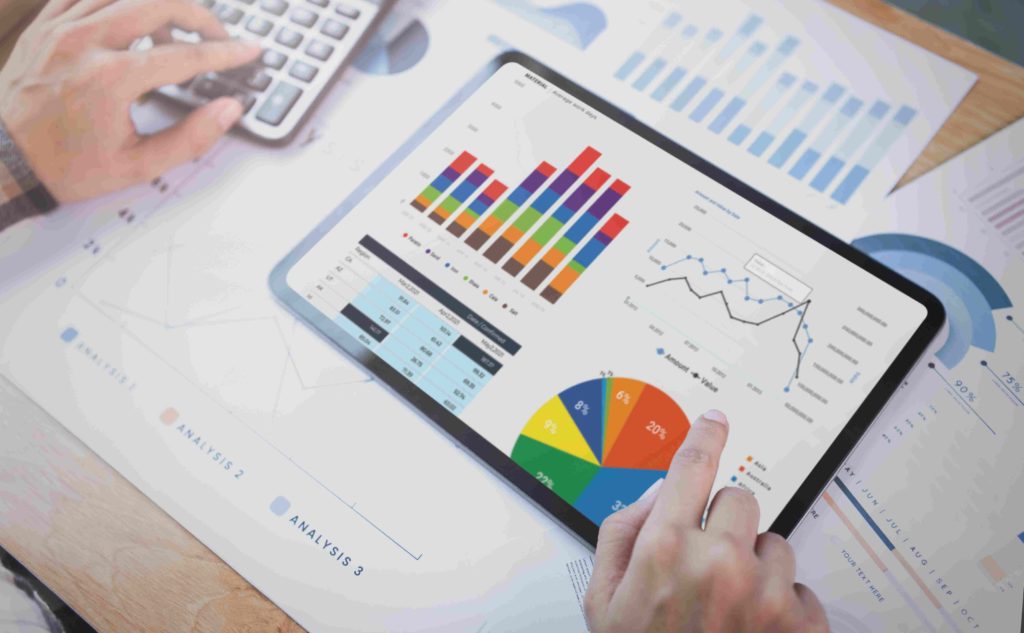Analytics for Business

What is business analytics?
Business analytics (BA) is a combination of disciplines and technology for employing data analysis, statistical models, and other quantitative approaches to solve business challenges. It entails an iterative, rigorous investigation of an organization’s data to drive decision-making, with a focus on statistical analysis.
Companies that are data-driven consider their data as a corporate asset and actively seek methods to use it to gain a competitive edge. Data quality, trained analysts who understand the technology and the business, and a dedication to leveraging data to uncover insights that influence business choices are all essential components of business analytics success.
How to use business analytics
BA begins with numerous basic activities before beginning any data analysis:
- Determine the analysis’s business purpose.
- Choose a technique of analysis.
- Obtain company data to aid in the analysis, which might come from a variety of systems and sources.
- Cleanse and combine data in a single location, such as a data warehouse or data mart.
Initial data analysis is usually done on a smaller sample data set. Spreadsheets with statistical functions to complicated data mining and predictive modeling programmes are all examples of analytics tools. The raw data reveals patterns and linkages. The analytic process iterates until the business goal is satisfied, at which point new questions are addressed.
Predictive models are deployed using a statistical procedure known as scoring and records often found in a database. Enterprises may use scores to make better, real-time judgments in apps and business processes.
BA also aids tactical decision-making in the face of unanticipated circumstances. Artificial intelligence is frequently used to automate decision-making in order to provide real-time answers.
Categories of Business analytics
The following are examples of several forms of business analytics:
- Predictive analytics uses trend data to determine the likelihood of future events
- Descriptive analytics records key performance indicators (KPIs) to understand the current status of an organization
- Prescriptive analytics, which makes suggestions based on prior success for dealing with similar problems in the future.
Diagnostic analytics, which is similar to descriptive analytics, is a fourth technique that some schools of thinking incorporate. It examines a company’s current situation and determines what specific events or results occurred.
Business intelligence vs. business analytics
Business intelligence (BI) and business analytics (BA) are phrases that are sometimes used interchangeably. There are, nevertheless, significant distinctions.
Before deploying business analytics, most companies start with BI. BI examines business operations to see what practices have been successful and where improvements can be made. Descriptive analytics is used in BI.
Business analytics, on the other hand, focuses on predictive analytics and provides decision-makers with actionable information. BA seeks to forecast patterns rather than summarizing prior data points.
The data gathered by BI serves as the foundation for BA. Companies can use business analytics to further evaluate certain regions based on such data.
Data analytics vs. business analytics
The examination of data sets in order to develop conclusions about the information they contain is known as data analytics. It is not necessary to utilize data analytics to achieve business objectives or get insights. It’s a wide term that encompasses business analytics.
BA entails the use of data analytics techniques in the search for business insights. Data analytics is sometimes used interchangeably with business analytics because it is a broad word.
Data science vs. business analytics
Analytics are used in data science to help people make better decisions. Advanced statistical approaches are used by data scientists to investigate data. They let the data’s characteristics lead their analysis. Although certain aspects of business analytics resemble data science, there is a difference to be made between data scientists and business analysts.
Even when powerful statistical methods are used on data sets, data science is not always included. True data science, on the other hand, employs specialized code and seeks for solutions to open-ended queries. Business analytics, on the other hand, tries to answer a specific issue or address a specific problem.
Business analytics’ most common problems
When attempting to execute a business analytics strategy, businesses may face both business analytics and business intelligence challenges:
- There are too many data sources. There is a growing number of internet-connected gadgets that generate commercial data. They are frequently producing various forms of data that must be incorporated into an analytics plan. However, the more complicated a data collection is, the more difficult it is to use it in an analytics framework.
- Lack of abilities. Employees with the data analysis abilities required to handle BA data are in high demand. Some firms, particularly small and medium-sized businesses (SMBs), may find it difficult to find personnel with the necessary BA knowledge and abilities.
- Limitations on data storage Before deciding how to process data, a company must first select where to keep it. A data lake, for example, may be used to store vast amounts of unstructured data.
Business analytics roles and responsibilities
The primary role of business analytics specialists is to gather and analyse data in order to affect strategic choices made by a company. The following are some of the initiatives for which they could give analysis:
- finding strategic possibilities based on data trends
- identifying possible business challenges and solutions
- developing a budget and business projection
- tracking progress on business initiatives
- reporting progress on business objectives to stakeholders
- KPIs must be understood, as well as regulatory and reporting obligations.
Hard and soft skills are required of business analysts. A business analyst does not need to be an expert in IT, but they must understand how systems interact. Some business analysts make the transition from an IT-focused career to a BA role.
Employers often seek for the following skills when hiring for these positions:
- cost-benefit analysis
- process modeling
- stakeholder analysis
- analytical problem-solving
- oral and written communication skills
- a basic grasp of IT systems, especially databases
- capacity to generate visual representations of data
- Detail-oriented
- knowledge with BA tools and software
- ability to produce visual representations of data
Final Thought
When your company uses business analytics, you’ll be able to make more informed decisions about revenue, customer experience, and general efficiency.
These techniques are sometimes referred to as “hidden gems” since they might disclose ways to get an advantage over your competition. Set a goal for yourself and keep your eyes on the prize. You’ll be pleasantly surprised by what you discover. For more information regarding Business Analytics click here, analytics for business so you can know more.
Reference: Wikipedia
This article is posted on Artic Left.




